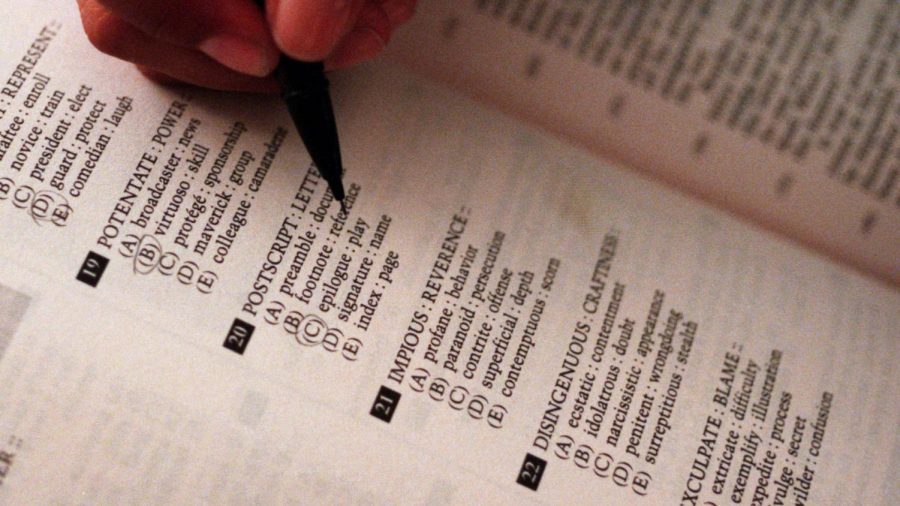The SAT is Making Major Changes
February 1, 2022
On January 25, 2021, the College Board announced that the SAT will no longer be given in its original paper form, but rather in a new, digital format starting in the spring of 2024. With additional changes such as shortened time, shorter reading passages, and allowing students to use calculators on the entire math section, it is possible that the SAT is changing to become more relevant, as some colleges and universities are dropping the requirement for standardized test scores.
First, there is the largest change, being that the SAT will now be a digital test rather than a paper one. When students take paper PSATs and SATs now, it generally takes a few weeks, or even up to a month, for them to be scored. In 2024, that will no longer be the case. According to the College Board Newsroom, “Students and educators will get scores back in days, instead of weeks.” Considering that students will be able to receive their scores in an efficient amount of time, they will be able to evaluate their scores and potentially prepare for another test if they want to improve. In addition, the tests will also be able to be taken in many forms digitally. Currently, the SAT is strictly taken on paper with a number two pencil, but in the new digital format, students “will be able to use their own device (laptop or tablet) or a school-issued device” (Collegeboard Newsroom). Since the test can be taken on numerous devices, there may be concerns about connection issues. However, the new SAT digital format is designed to not only save progress while the device reconnects, but also pause the time limit while reconnecting. In this way, students will not have to worry about the technical problems that sometimes occur during online tests.
Not only is the SAT going digital, but the test itself is changing. Currently, the SAT features two math sections: one that allows students to use a calculator and one that does not. In the new online version, students will be able to use a calculator for the entirety of the math section. For the evidence-based reading and writing sections, “the digital test will feature shorter reading passages with one question tied to each, and passages will reflect a wider range of topics that represent the works students read in college” (Collegeboard Newsroom). With shorter passages and only one question per passage, the test will be very different from the paper format, which is known to have five passages with ten corresponding questions each. The College Board also notes that this change will affect the time limit, making the test around two hours long instead of three. With the test being much shorter and with more passages, the College Board believes that this will give students more time per question as well.
The SAT is making many major changes, so how will this impact students? In November 2021, a global pilot of the digital SAT took place, and students were able to report how they felt about the experience. According to the College Board Newsroom, Natalia Cossio, a junior who took the digital pilot test, enjoyed the experience; “The shorter passages helped me concentrate more on what the question wanted me to do. Plus, you don’t have to remember to bring a calculator or a pencil. ” Hearing this from a junior helps to view the new digital format of the SAT from a different perspective and brings new thoughts about what the new SAT will be able to provide for students.
Testing days of scantrons and number two pencils are beginning to diminish, and technology is becoming the face of yet another area of the education system. Although the current SAT, as of 2022, is taken on paper, the students of the class of 2025 will be the first to experience the new digital format, no longer needing to bring number two pencils like many generations before.
Image Source:
● https://www.axios.com/college-board-digital-sat-28a297a3-9057-4048-a3d1-c3d936368dba.html
Sources:
● https://newsroom.collegeboard.org/digital-sat-brings-student-friendly-changes-test-experience


Eric Brown • Sep 14, 2022 at 10:15 am
I’m part of the Class of 2025 and I have found this information useful. Thanks for writing this article. Keep it up!